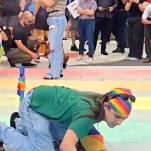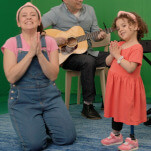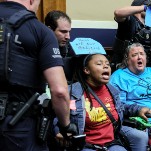A New, Chilling Account Of What Happened To Eleven-Year-Old Alleged Rape Victim
LatestThe September issue of GQ has a piece, not online, about the repeated gang-rape of an eleven-year-old child in Cleveland, Texas. And whereas previous coverage appalled observers for implicit victim-blaming, Kathy Dobie’s story has the sensitivity (and the time and space) the tragedy deserves, though we still learn much more about the victim and her family than the perpetrators.
There is plenty of new, upsetting material here, including details about the assault I prefer not to transcribe. Dobie spent time with the family of the girl (referred to here by her court pseudonym, Regina) and spoke to her parents and siblings, though apparently not the victim herself.
Regina is described as “a quick learner, a chameleon,” and as “deeply loyal”: “You’d practically have to kill her to lose her love.” (Dobie’s words). Her mother, chronically ill with untreated tumors, calls her “my wild child,” and says, “That girl could live on mirrors. That girl could live taking pictures of herself. She wants to be a model.”
Maria, Dobie writes, is indulgent to her youngest daughter, because she herself was raised in a strict, sometimes abusive family; later, Maria tells her about her stepfather sexually abusing her throughout her entire childhood, starting at age five.
-

-

-

-

-

-

-

-

-

-

-

-

-

-

-

-

-

-

-

-

-

-

-

-

-

-

-

-

-

-

-

-

-

-

-

-

-

-

-

-








































